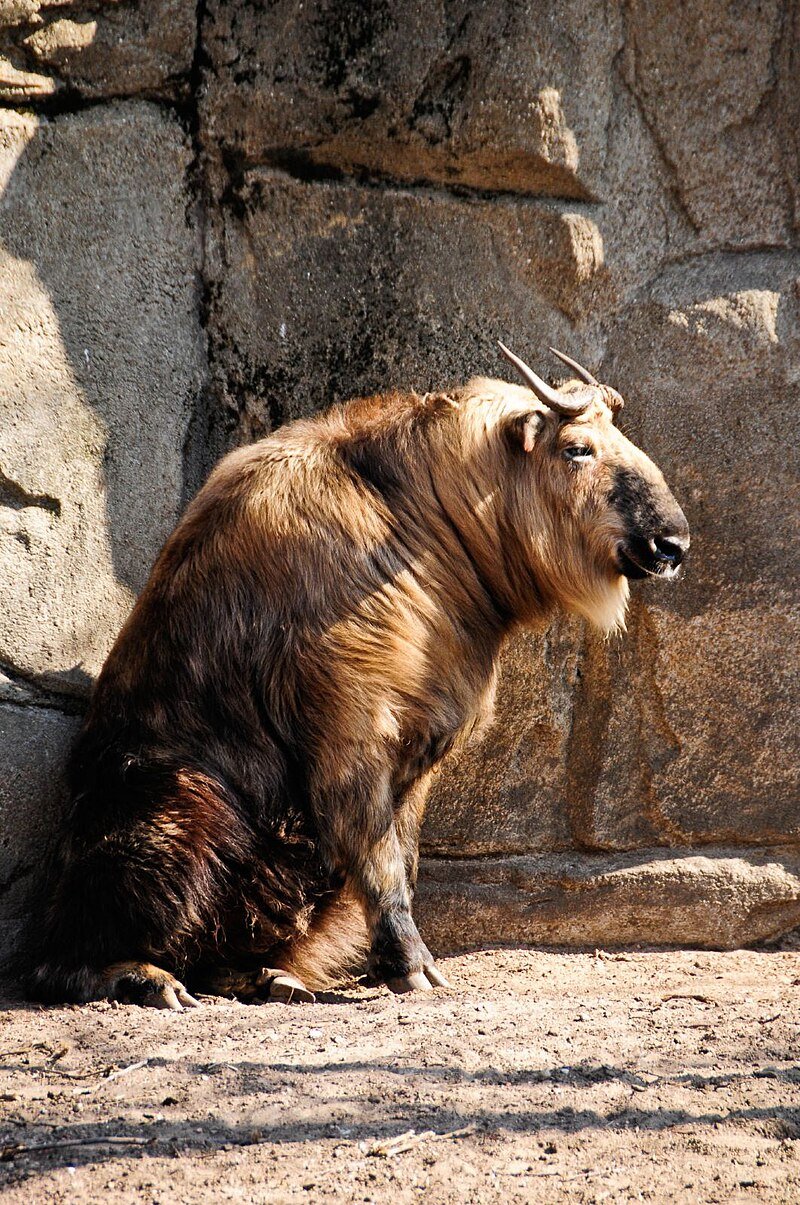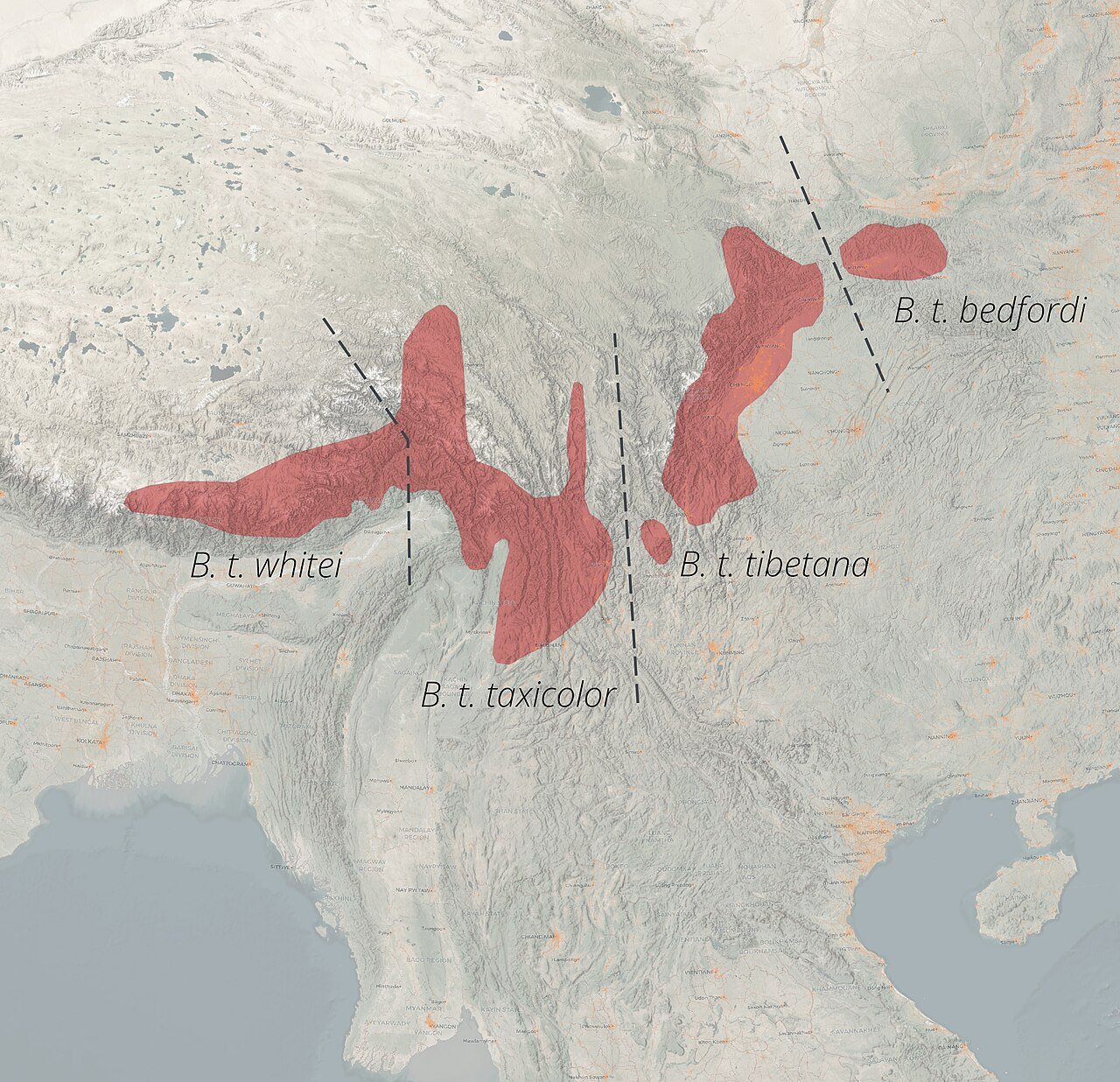Takin it Easy










I can't tell you how excited I am to dive into one of my favorite oddballs. I know I say that often, but it's always true. From the first time I laid eyes on this species at the Cincinnati Zoo and squealed with excitement, I’ve been captivated by its uniqueness and love it with every fiber of my being. Today, I proudly introduce you to the wonderful Takin! Oh, and the pronunciation is TAH-kin. Hope that helps.
What is it?
Beautiful... More? Ok, takins were historically classified with muskoxen, but new mitochondrial tests have shown a closer relationship to sheep. Currently, takins are placed in the Caprinae family, which is a fancy way of saying "goat-antelope." These beautiful behemoths are large and stocky, rivaling the muskox as the largest member of the family. They can grow to about 4.5 feet at the shoulder and weigh up to 770 pounds for males and 660 pounds for females. As I said, they’re stout! Honestly, takins look like a very large mountain goat body with the head of a wildebeest or gnu. They have a distinct long face and the cutest little horns. Though they’re adorable, they’re a bit woolly and have a very distinct... potent smell. It's part of their charm! Ok, moving on...
Where are takins found?
Takins are native to Southeast Asia. They are found from the Himalayas in India and Bhutan to Myanmar and China. They are pretty versatile when it comes to habitat, ranging from wooded valleys to grassy fields in the rocky alpine regions.
What do takins eat?
Like most goat/sheep species, takins are herbivores. Their favorite foods include grasses, leaves, young bamboo shoots, and flowers. They essentially have the same diet as Littlefoot, which makes my little dinosaur-loving heart so happy.
What does takin dating look like?
Takins live in small family groups for most of the year, but during the summer, they come together to form large herds of up to 300 adults. Then, in very typical goat fashion, the males battle it out to see who gets breeding rights. Breeding usually occurs in July and August, and after an 8-month gestation period, a single calf is born. They’re very cute babies... just look at the Golden takin calf below!
Do takins have superpowers?
Of course, they do! First, they are the best members of their family at making stinky oil. Most goats and other relatives have scent glands in specific locations, but not the takin… their WHOLE body is a scent gland! This makes marking trees and other objects so easy. Another superpower is that these amazing animals live in extremely cold, mountainous areas, but like Elsa, the cold never bothers them. They stay warm thanks to a double coat that is both super insulating and weatherproof. Their big nose helps too—by being so large, the frigid air is warmed up before reaching their lungs. They’re incredible!
The last superpower stretches all the way back to Ancient Greece. The tale of Jason and the Golden Fleece features the hero Jason overcoming trials and tribulations to reach the fabled fleece of gold. This fleece is believed to be from a takin, since they are known to have a golden coat. (I’m still giddy over this fact. It makes me so happy when two of my passions combine!)
How many are there?
There are 4 subspecies of takin: the Mishmi takin, the Golden takin, the Tibetan/Sichuan takin, and the Bhutan takin.
Science Time!! (And the crowds go wild…aaahhhh)
Takin - Budorcas taxicolor
Mishmi takin - B.t. taxicolor
Golden takin - B.t. bedfordi
Tibetan/Sichuan takin - B.t. tibetana
Bhutan takin - B.t. whitei
The IUCN Red List has the species as a whole listed as Vulnerable. The main threats to takin are habitat loss/destruction and fragmentation, over hunting, and disease transmission from domestic species. Bhutan has made the takin its national animal, and taken great steps to protect their treasure. China too is taking steps to protect the Tibetan takin, which is also known at the Sichuan takin. Hopefully with continued conservation and governments policies can help protect our favorite stinky oddballs.
Really quick I want to list some of the fun nicknames of the takin:
Gnu goats
Bee-stung Moose
Cattle chamois
Antelope Cow
Resources
San Diego Zoo Wildlife Alliance. (2024). Takin. Animals. https://animals.sandiegozoo.org/animals/takin
Song, Y.-L., Smith, A.T. & MacKinnon, J. 2008. Budorcas taxicolor. The IUCN Red List of Threatened Species 2008: e.T3160A9643719. https://dx.doi.org/10.2305/IUCN.UK.2008.RLTS.T3160A9643719.en.
White, M. (2024). Bhutan’s national animal, the takin, is the largest mammal you’ve never heard of. Follow Alice. https://followalice.com/knowledge/bhutans-national-animal-the-takin-is-the-largest-mammal-youve-never-heard-of


